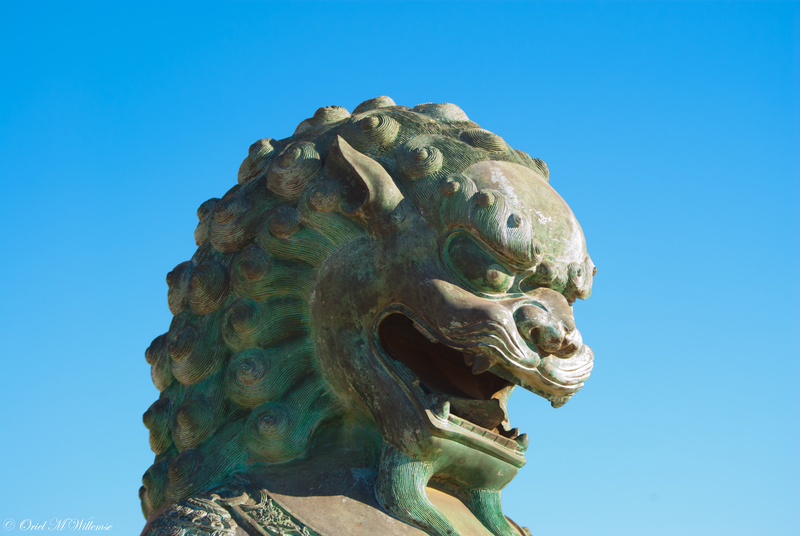This was taken at Nan Hua Budist Temple – Bronkhorstspruit – There is quite a history in it’s short existence, you can read all about it here
Chinese guardian lions, known also as stone lions (石獅, Pinyin: Shíshī) in Chinese art and often (incorrectly) called “Foo Dogs” in the West, are a common representation of the lion in pre-modern China. They are believed to have powerful mythic protective powers that has traditionally stood in front of Chinese Imperial palaces, Imperial tombs, government offices, temples, and the homes of government officials and the wealthy from the Han Dynasty (206 BC-AD 220). Pairs of guardian lions are still common decorative and symbolic elements at the entrances to restaurants, hotels, supermarkets and other structures, with one sitting on each side of the entrance, in China and in other places around the world where the Chinese people have immigrated and settled, especially in local Chinatowns.
The lions are always created in pairs, with the male playing with a ball and the female with a cub. They occur in many types of Chinese pottery and in Western imitations[1].
In the west, the guardian lions are referred by some as Fu Lions or lions of Buddha[2] In Tibet, the guardian lion is known as a Snow Lion. In Myanmar they are called Chinthe and gave their name to the World War II Chindit soldiers. In Japan the lion figures are known as Komainu (狛犬・高麗犬, lit Korea dogs) possibly due to their introduction to Japan through Korea. In Okinawa, similar lion formed statuettes are known as Shisa.
Above, thanks to Wikipedia





